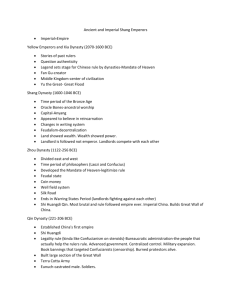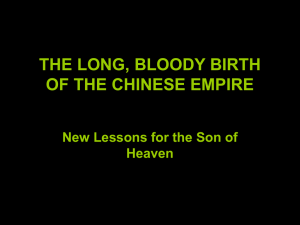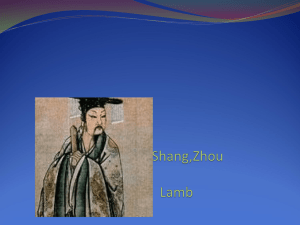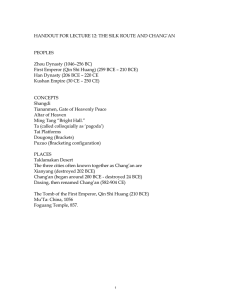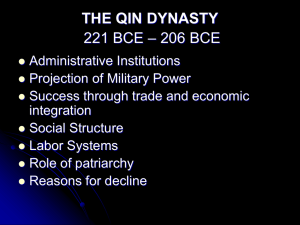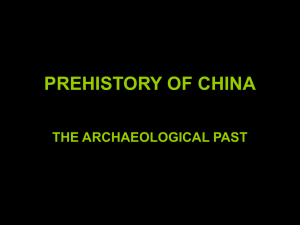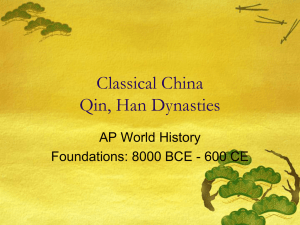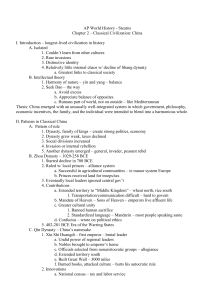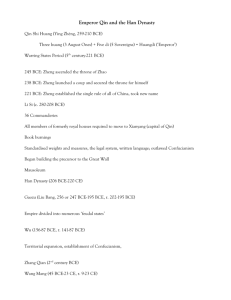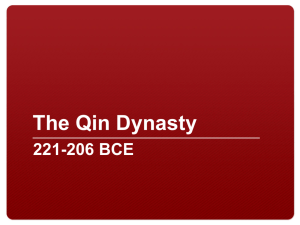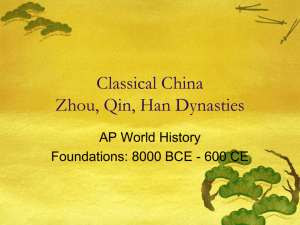China Timeline 1700 BCE to 200 CE
advertisement
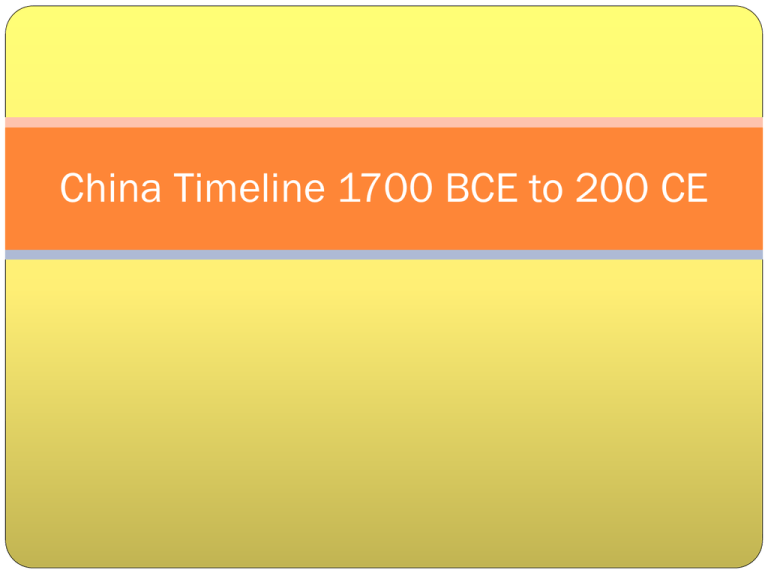
China Timeline 1700 BCE to 200 CE Xia Dynasty 2200 to 1600 BCE Cities along the Yangtze River banded together to stop flooding. Yu the Great 2200 to 2100 BCE The great canal builder. When on a 13 year quest to build canals and control flooding. Legend states,Yu was so immersed in helping others that he passed his house three times on his 13 year quest and refused to enter Shang Dynasty 1600 to 1000 BCE Territorial expansion and the development of writing and art. This marks the beginning of Chinese culture Zhou Dynasty 1000 to 250 BCE Development of modern Chinese writing. The teachings of Confucius. The development of the Mandate of Heaven Theocracy This is the concept that there is no separation between religion and politics. The king or queen and god, are one in the same. Mandate of Heaven The ruler’s job is to figure out the will of god and implement it. If the ruler has figured it out, their efforts will be successful and they will have the Mandate of Heaven. Qin Dynasty 250 to 210 BCE Qin Shi Huang was an important but brutal leader. Considered China’s First Emperor. Great Achievement A collection of walls built over a long time. The most important stretch was built between 220 to 206 BCE. The wall brought security from northern nomadic invaders. Peace at a Price Qin Shi Huang saw ideas as threatening. He censored any scholar who promoted anything that was not practical. To intimidate scholars, he buried hundreds alive. Han Dynasty 200 BCE to 300 CE 500 years of peace and prosperity called Pax Sinica. The empire grew much larger. The Concept of Civil Service Nepotism is the concept that you hire and promote friends and relatives. Civil service is the concept that you choose government officials objectively. These talented bureaucrats were called Mandarins. The Silk Road During the Han Dynasty, China begins economic activity India, Western Asia, Northern Africa, and even Europe. Feudalism After the end of the Han Dynasty, China fell into an extended period of short dynasties and feudalism.
